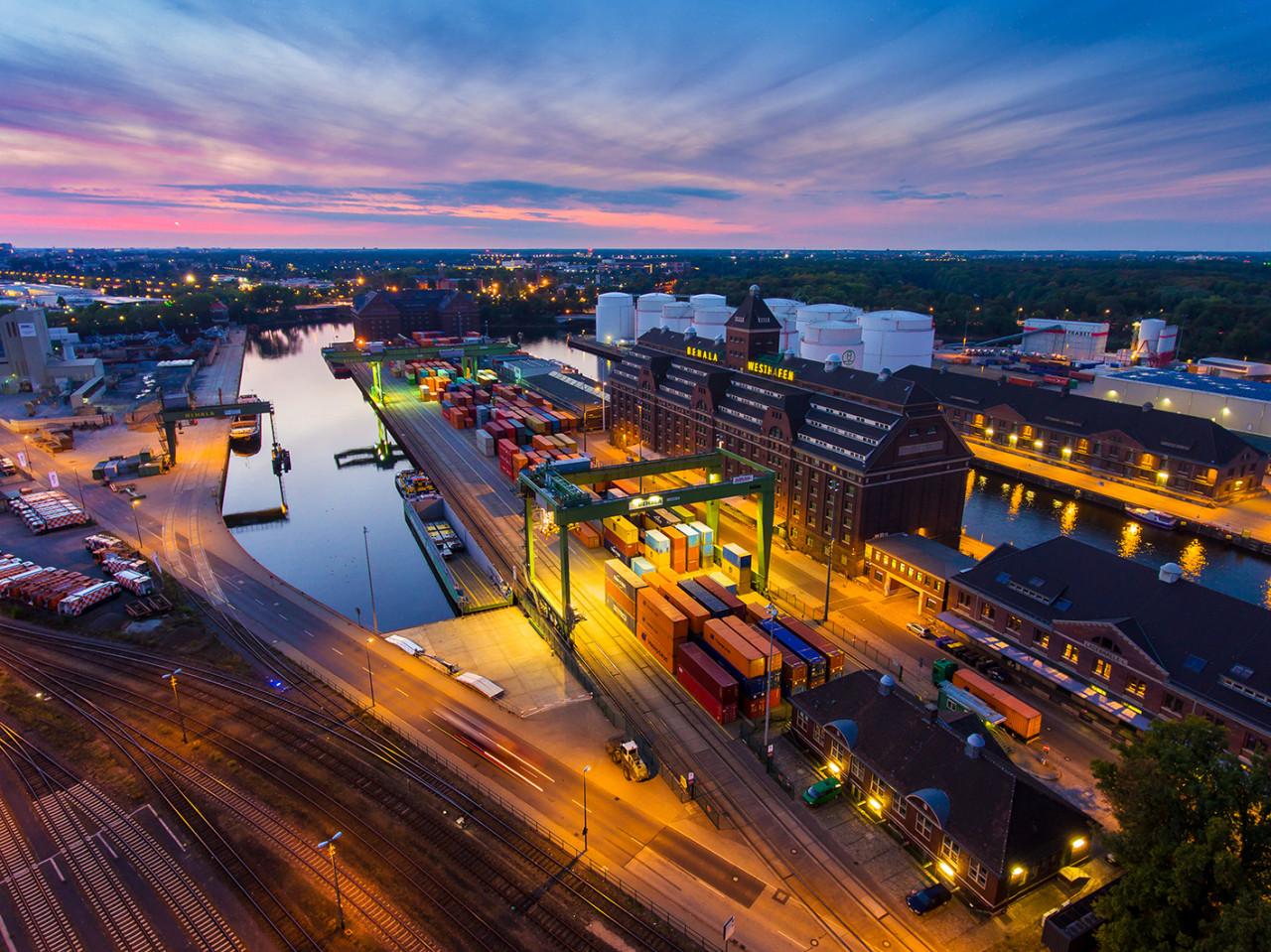A lack of space in ports is a challenge for the expansion of trimodal and sustainable logistics
Only 1.2 million square meters of the 26 million square meters of new logistics space built in Germany between 2017 and 2021 are located within port areas. That is around 4.6 percent. There were already 2.1 million square meters within a one-kilometer radius of the ports, and 2.9 million square meters within a two-kilometer radius. This is the result of a current study by the logistics property consultant Logivest Group. For this purpose, Logivest analyzed new logistics buildings in 178 ports in Germany's top logistics regions, which are inland and sea ports as well as trimodal freight transport centers.
"The low level of new construction and the associated lack of logistics space in Germany's ports threatens to become a major challenge for the expansion of trimodal logistics," warns Kuno Neumeier, CEO of the Logivest Group. Trimodal logistics, i.e. the interlocking of road, rail and shipping, is a key component in achieving sustainable logistics that minimize CO2 emissions. Because even if container shipping is often criticized for its impact on climate change, it is still significantly more efficient than road transport. According to the Federal Environment Agency, container ships (3,000-8,000 TEU) emit around 17 g CO2 per tonne-kilometer (tkm), while a truck (truck/semi-trailer truck 24-40 t, average goods) emits around 68 g /tkm. This means that port areas should actually be extremely attractive for real estate investors, project developers and logisticians, since they are crucial for meeting ESG goals due to the trimodality. “To date, however, the discussion about sustainable logistics real estate has mainly been limited to the operation and construction of real estate. The effects of transport on delivery and distribution of the goods on ESG criteria have not really played a role so far - neither in government regulations nor in the various certification systems in the real estate industry," says Neumeier.
The lack of logistics space in ports is partly homemade. Areas that are currently not required are often sold by the port operators, for example for new residential areas. “The ports often cut themselves in the flesh with this. Because the residential development not only threatens the commercial building rights of the surface reservoirs that still remain in the port area. Port logistics are also not compatible with residential development due to different noise and emission regulations. Trouble is usually inevitable here,” Neumeier points out. Even if the new logistics buildings in the ports are limited in many places, many port areas definitely offer potential for further modern logistics areas. “Many ports in Germany have outdated real estate that is practically out of the question for modern logistics uses. Extensive potential for new construction could be realized by revitalizing these brownfield sites. The filling of water areas that are not or no longer needed also offers such potential - a very positive example of this is the Jade-Weser-Port," explains Neumeier.









